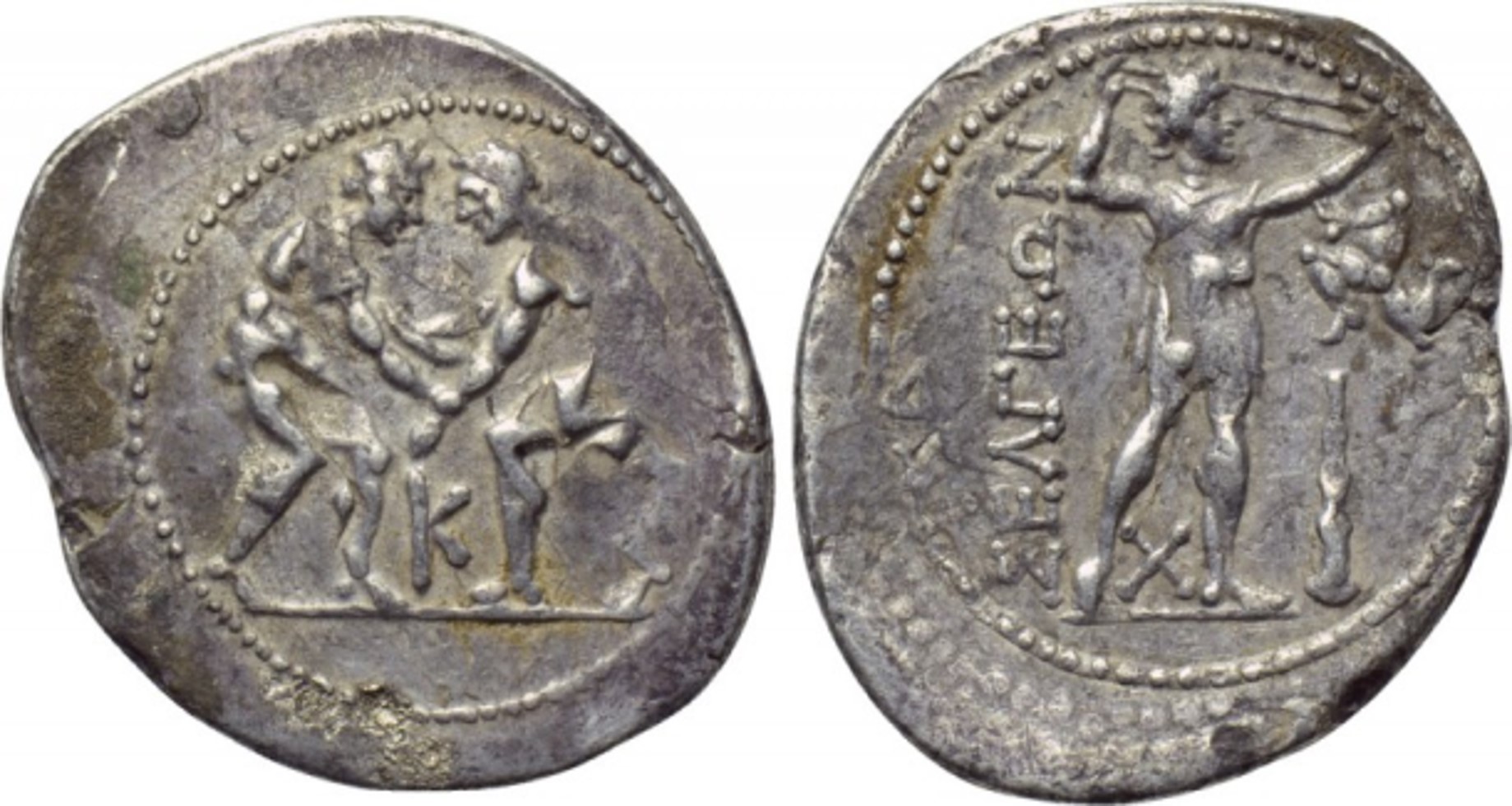300 BCE - 190 BCE | ΣΕΛΓΕΩΝ
Overstriking coin
Selge_2346_Naumann.jpg
|
|
Sale(s)Sale(s) ᵖ:
|
Naumann, 45, 3 July 2016, 246
|
|
|
|
Description
| ObverseInscription or printing placed on the obverse.:
|
Two naked athletes wrestling. Between them, K. Border of dots.
|
ReverseInscription or printing placed on the reverse.:
|
ΣΕΛΓΕΩΝ (Greek) Slinger advancing right. In field, triskeles above club. Between the legs, X. Border of dots.
|
Mint and issuing power
| MintIdentifies the place of manufacture or issue of a numismatic object.:
|
Selge
|
Ancient regionAncient region.
|
Pisidia
|
Modern countryModern country: Turkey
|
AuthorityIdentifies the issuing power. The authority can be "pretended" when the name or the portrait of X is on the coin but he/she was not the issuing power. It can also be "uncertain" when there is no mention of X on the coin but he/she was the issuing power according to the historical sources:
|
|
Chronology
| FromIdentifies the initial date in a range assigned in a numismatic context. 300 BCE toIdentifies the final date in a range assigned in a numismatic context.. 190 BCE
|
Hellenistic 323-30 BC  periodTime period of the numismatic object. periodTime period of the numismatic object.
|
Physical description
MetalThe physical material (usually metal) from which an object is made.: Silver 
|
WeightWeight of the numismatic object (in grams). in grams: 7.997.99 g <br />7,990 mg <br />
|
DenominationTerm indicating the value of a numismatic object. Examples: tetradrachm, chalkous, denarius.: double siglos 
|
|
| DiameterDescribes diameter of an object (in mm).: 2828 mm <br />2.8 cm <br />
|
StandardStandard.: Persian
|
References
Description
| ObverseInscription or printing placed on the obverse.:
|
|
ReverseInscription or printing placed on the reverse.:
|
|
Mint and issuing power
| MintIdentifies the place of manufacture or issue of a numismatic object. ᵖ:
|
|
Ancient regionAncient region. ᵖ
|
|
Modern countryModern country:
|
AuthorityIdentifies the authority in whose name (explicitly or implicitly) a numismatic object was issued. ᵖ:
|
|
Chronology
| FromIdentifies the initial date in a range assigned in a numismatic context. toIdentifies the final date in a range assigned in a numismatic context..
|
periodTime period of the numismatic object.
|
Physical description
References
